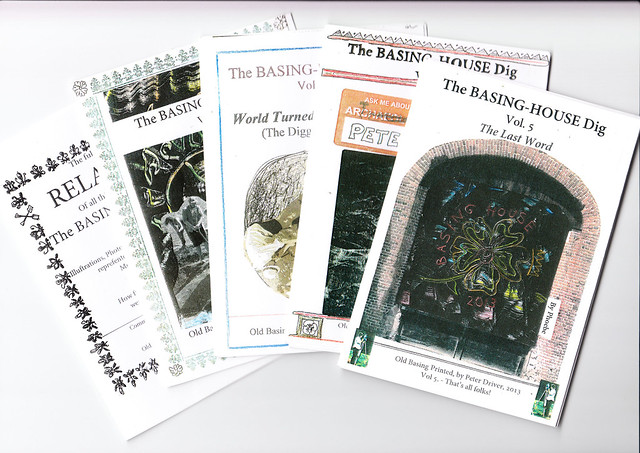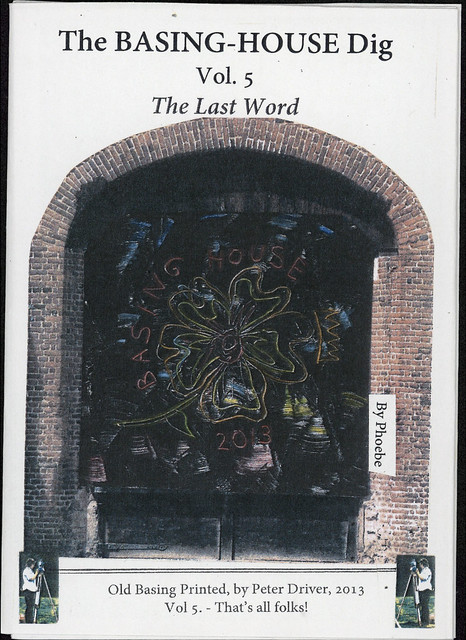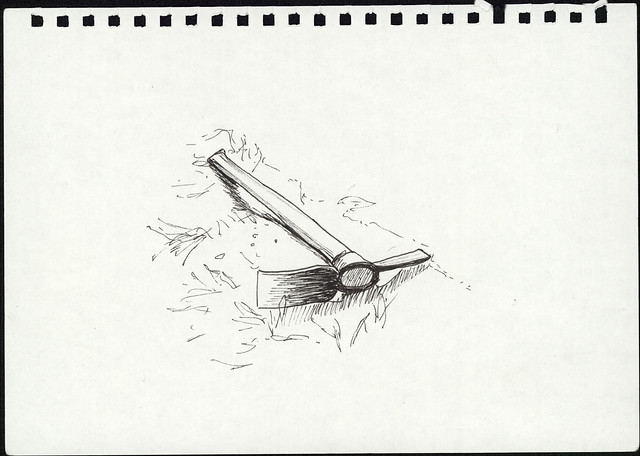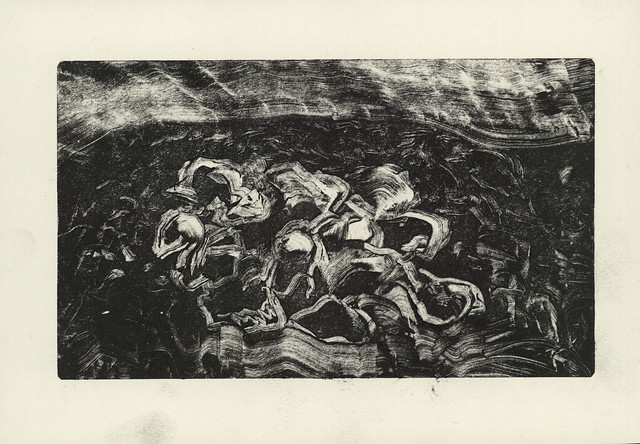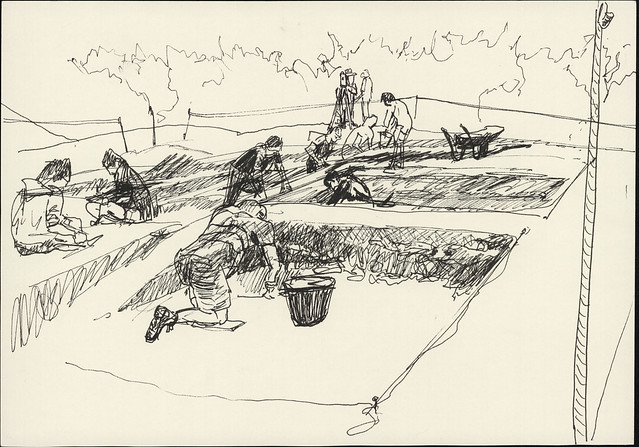Guest Post: An Artist’s Perspective
–
Peter Driver, our Artist-in-Residence, has written a piece reflecting on his experience of the excavation season.
Thanks Peter!
—
I relished the opportunity to be artist-in-residence at the Basing House dig. I felt rather unqualified for the role, having no previous experience of archaeology, outside of TV documentaries. I didn’t even study History at school beyond year 9 (or third year as it was called back then) but I was excited by the prospect of being part of a multi-disciplinary team carrying out an intensive three-week project.
I planned to make a series of ‘zines’ (small hand-made magazines) to capture some of my thoughts and reflections and to provide a memento/souvenir of the experience for the members of the dig team. I had never made a zine before arriving at Basing House. Their production consumed a great deal of my time and I was grateful for some assistance on folding duties from a few of the students, and for the patient support from the visitor centre staff when the photocopier jammed (which it did frequently) or needed logging-in, again. I decided to make limited editions of 52 signed copies of each zine. I suppose I did that to make them somehow more ‘special’, personal, and ‘valuable’ to the recipients.
Some students wanted to try mono-printing techniques so I did a number of mini workshops with two students at a time coming to my makeshift studio and producing their first ever mono-prints. Some even made work with archaeology themes! A few of their prints were featured in the zines, with one commanding the front cover of zine Vol. 5.
My pen drawings tend to be observational/representative and on the dig I made several drawings of the team working. The human effort and orchestrated activity was exciting to behold: Archaeologists, students, researchers and local volunteers; all working to gather as much information as possible from this little area of ground. From time to time my working-class guilt got the better of me and I had to put down my pen in order to shovel some loose spoil, or trundle a wheel barrow to the spoil heap.
A day-trip to Hampton Court Palace helped us all to visualise what Basing House would have looked like before it was destroyed in the Civil War. It had been one of the finest Tudor houses in England and similar in design to the Tudor gatehouse and base court at Hampton Court.
The material excavated and dumped on the spoil heap included beautifully formed flints, crumbling soft chalk, clay, stone, earth, roots, bits of old tyre…all had their own charm.
The working methods with spade and shovel, mattock and trowel allowed layers to be cleared efficiently and sensitively down to a fine shaving of soil to find the edges of each feature and context.
Making work in response to all this excitement was a challenge. So many visualising technologies were in use by the team, with meticulous section drawing, formal photography and image capture to enable computer modelling – that I found myself withdrawing to the comfort zone of old technology, pen and paper, glue and scissors and printmaking.
Perhaps next time I will be braver and engage with some new media expressions.
It was a privilege to work with such talented and committed people. I really hope we can do it again next year!
—
Peter Driver
Filed under: Archaeologist Portraits, Archaeology of Archaeology, Artist in Residence, Peter Driver, Summer Excavation, Winchester School of Art Tagged: art, artist in residence, drawing, monoprints, paper, pen, screenprints, sketching, zines


